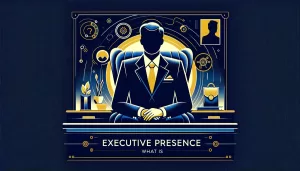It is not a secret that international student jobs in USA are not easy to find.
You will likely be overlooked for jobs and will feel undervalued in many situations.
You might even find yourself face-to-face with blatant discrimination. That is par for the course.
And while I’m all about diversity, equality, and inclusion… the truth is that most international students can’t wait for the system to change. Our timeframe is about 2-3 years.
In many cases, it’s very close to a “make it in the US or die trying” scenario.
It’s common to see whole families gather resources so that the student can get a shot at living the American Dream. The disparity in professional income between the US and many countries is enough to create an incentive for many students to take such risks.
Many of us make the commitment to the program without even fully understanding the total costs and without having the complete amount of money that will be required.
I know because that was my case. I was able to cover my tuition and living expenses thanks to:
- The unconditional financial support from my family
- I got a huge discount by working at my school and getting in-state tuition,
- And I got “lucky” by winning several scholarships
Even though I was a below-average student in high school and undergrad, I was able to make a significant change in graduate school.
By adopting a “no retreat, no surrender” mindset, I was able to graduate at the top of my MBA class as the Outstanding MBA Student in 2017.
It was not easy. It was overwhelming at times. But it was definitely worth it.
My professional trajectory took a 180 turn thanks to those two years that I spent at the C.T. Bauer College of Business at the University of Houston.
I am writing this guide because it’s the one I wish I had when I was starting my MBA program.
I know I left money on the table by not applying to many scholarships that were available. I also missed out on some summer internships with global companies because I didn’t know that you have to start working your way to these one year ahead.
I made a ton of mistakes that I’d like you to avoid.
In this guide, I’ll do my best to cover:
- Communicating your value with confidence (to attract hidden job opportunities)
- Networking strategies for immigrants (to avoid being overwhelmed in an extroverted culture)
- Understanding the nuances of cross-cultural communication (and going straight to the point without feeling you are being rude or unkind)
- Balancing your education and career goals (and why, when in doubt, you should go out… and network)
Contents
- 1 The reality of That-Which-Must-Not-Be-Named
- 2 Communicating your value with confidence
- 3 Networking strategies for international students
- 4 Adapting and understanding cross-cultural communication
- 5 Delivering great presentations
- 6 The value of time in different cultures
- 7 Balancing academics with your career goals
- 8 Finding international student jobs in USA
The reality of That-Which-Must-Not-Be-Named
It’s important to talk about the elephant in the room.
And believe me, the visa WILL be the elephant in every room in which an international student steps in.
I’m not an immigration attorney, so please consult with one before you make any type of decision, but here is an important mental exercise all international students must do:
We have to think about the hiring situation from the employer’s perspective.
The truth is that, as of 2023, there are 65,000 H-1B visas available. There are an additional 20,000 for those with a master’s degree or higher.
And there are more than 484,000 applicants every year.
The reality is that, in many cases, luck plays a big role in getting the visa. That’s why it’s called a “lottery.”
This means that, for the employer, there is a lot of uncertainty surrounding the hiring decision of investing in an international student.
In the business world, uncertainty translates to RISK.
It’s risky for an employer to hire an international student because if, after the OPT period, they don’t get lucky in the lottery process, they might lose the time and money investment they made in you.
Now, don’t despair because there is a way in which you can make it worth it for them no matter what so that they take a chance with you.
In the business world, investors and decision-makers always pair potential RISKS with associated REWARDS to understand the full picture.
Low risk usually means low potential reward.
High risk usually means high potential reward.
Since we, as immigrants, cannot control that we are perceived as “risky,” we need to put all our energy into being seen as a reward.
Everything else we cover in this guide is focused on that. The goal is to position yourself as a reward in the eyes of the employer.
Communicating your value with confidence
As Susan Cain pointed out in Quiet: The Power of Introverts in a World that Can’t Stop Talking, there has been a shift of values in American culture.
In the book, Cain shares how there’s been a change from a Culture of Character to a Culture of Personality.
This means that if you have a tendency to silence in social situations, you MUST change that. You need to develop the necessary skills to speak up and clearly communicate your value and expertise.
I’m not asking you to become an extrovert. That’s impossible. I tried and burned out.
What we must do is to be “selectively extrovert” in sprints.
We can do so with these two tools:
- Personal branding statement
- Personal branding stories
I won’t go too deep into these tools, because I have other guides dedicated to each of these.
But in essence, it’s about being concise and to the point when you speak. Your personal branding statement is a great tool for when you are asked:
- What do you do?
- Can you share a bit about yourself?
- Any other variation of questions about you and your background
Having a clear and concise answer for any of these situations will help you become a memorable professional.
BONUS: Download our swipe file of good and bad examples of personal branding statements for international students.
And once you’ve introduced yourself, you rely on your personal branding stories to let people know how you can create value for them and their organizations.
You can discuss projects, accomplishments, awards, and other professional stories that communicate what you can do for others.
The key is that these MUST be stories. That way, these won’t come off as narcissism, and you won’t feel bad about sharing them.
Most people shy away from self-promotion because they think it’s bragging. It’s not.
Self-promotion is about clearly communicating how you can help others. When you do so in story format, you are leveraging one of the most powerful tools in the world.
Also, make sure to check our guide with templates and examples to start crafting your personal branding statement.
Networking strategies for international students
It’s important to understand that 80% of jobs are found through networking.
Not online. Not on job boards. Not applying to 100 positions every week.
Through networking.
If you spend most of your time applying to jobs, which is what most people do, you compete with many people for a few jobs.
On the other hand, if you go out and network with people, you compete for most of the jobs with only a few people.
Most people prefer to fill out applications because it feels like you are at least doing something. Networking is vague and doesn’t feel like it is getting you closer to a job.
The key is that you have to be strategic with your networking. Before going out to events, you should list the companies you are targeting. Ideally, most of these should be companies with a history of sponsoring H-1B visas.
Also, you must be strategic about the organizations and events you pick. So that you can increase the likelihood of meeting hiring managers or people on the team of those hiring managers.
Actionable tip: The 3.3.432 method is the best way to go about networking for international students.
Here’s how it works:
- Go to 3 events per week
- Meet 3 new people (and connect with them on LinkedIn)
- And you will add, at least, 432 new people to your network each year
An event can be anything from a graduate student organization meeting to a conference. Just make sure that you are meeting three new people and that you are sending personalized LinkedIn connection invitations.
Keep in mind that many of these organizations have free tickets, or discounted tickets, for students. In many cases, if there are no free tickets, you can email the organization and offer to volunteer in exchange for a ticket.
For your purposes, it’s even better to volunteer because you will be more memorable for the organizers. Make sure that you show up on time (at least 10 minutes before the time they ask you to be there) and with a “can do” attitude.
If, for any reason, you can’t go to many events because you don’t have a car, you can do something similar online.
Building your online presence and network
You can go to virtual events or even reach out directly to the people you want to connect with.
Just make sure you include a personalized message, with a great question, in that connection invitation.
Pro tip: Start by connecting with people who work for your target company who attended the same university you are currently attending.
The likelihood of them accepting an invitation from a stranger is higher because you have at least one thing in common.
Just make sure to tidy up your LinkedIn profile before you start sending out invitations.
The minimum items you need to have are:
- Professional photo
- Headline with your personal branding statement
- About section with your professional story
- Banner that expands your value proposition
- Experience section using the STAR method
- Education, including the current program you are a part of
Adapting and understanding cross-cultural communication
One of the biggest challenges for international students is adapting to the direct-style of communication here in the United States.
In Latin America, as it is in many other cultures, you beat around the bush when you are going to ask someone for something (a project, a favor, etc.).
You start the conversation by asking about their day. Then you might ask about their job. Later on, you might even talk about their family and steer the conversation in many different ways.
It’s only after several minutes that you will ask and state the real reason for the call or message.
In the United States, it’s the opposite. It’s straight to the point.
So much so, that it might even feel rude when you are not used to it.
This is something that you must adapt to, asap, so that you are not perceived as unclear or not smart, when you are communicating.
Again, it will feel like you are being rude, but it’s actually the way people communicate here.
You must be concise with your questions, statements, and stories.
Delivering great presentations
If you want to build a successful career in the United States, you better get good at presenting because you will be doing a lot of it.
Whenever you are conversing with more than one person, you are actually doing a presentation.
If holding the attention of one person is difficult, that challenge grows exponentially with the number of extra people in the audience.
Which is why you have to develop your skillset as a speaker.
Conducting a meeting is a presentation. Asking your boss for a raise is a presentation. Asking for a budget for your team or project is a presentation.
Not knowing how to do great presentations is like fighting a fight with one hand tied behind your back.
The easiest way to get started is to rely on the fundamentals of public speaking.
You can’t go wrong with these formats:
- Tell them what you are going to tell them
- Tell them
- Tell them what you told them
Or
- Big idea you want to share
- 3 points that support your idea
- Summary of the value that your idea can create
There are many more, but you could easily do a lifetime of presentations with these two.
The value of time in different cultures
Another big change is adapting our understanding of time to the American culture.
In Latin America, if you get invited to a dinner, event, or party, the starting time is a suggestion.
If it starts a 8:00 pm, this is what you know:
- DO NOT arrive at 8 because the hosts will not be ready
- You can start arriving at any time after 9
- Most people will likely show up between 10 and 11
- The event ends when the last guest decides to leave
That is not how things are in the US. Here, if it starts at 8:00 and ends at 10:00, this is what you know:
- You better be there at 7:55 pm because the event starts at 8:00 sharp
- It’s rude if you arrive late
- It’s expected that you leave at 10:00
- It’s rude if you stay after that time
Of course, there are always some exceptions. But you can’t go wrong by following these guidelines.
What that means for international students is that you MUST get used to arriving 5 to 10 minutes early for everything you do here in the US.
- Events
- In-person meetings
- Zoom meetings
- Interviews
And any other activity where others will be investing their time.
You must respect time, because time has a high value in this culture. When in doubt, aim to arrive 30 minutes early to everything. Most likely you’ll end up arriving only 10 to 15 minutes early.
And if you do end up arriving 30 minutes early, you probably have a lot of reading to do for your graduate course so make sure that you always have some reading material at hand.
Doing so will eliminate the anxiety and problems that come when you are running late for anything.
Balancing academics with your career goals
To make sure that this guide is as valuable as possible, I had conversations with several of my colleagues who were international students.
Regarding academics, we agreed that it is usually the initial focus for international students.
We are making a huge investment in our education. Often, we get all kinds of help from our family to be able to meet our financial obligations.
This is why we are often inclined to focus on getting good grades. Because it is something that we can show as proof that we are taking action to achieve our goal of building a successful career in the US.
It is likely that our family wouldn’t be happy if we show average grades but a growing network. Getting an additional LinkedIn connection from a person at a target company doesn’t feel like an accomplishment.
But it is.
One of those conversations I had while I was doing research to write this guide was with my good friend Nusabbeh Waqar. And we both agreed that if we had to do it all over again, we would focus more on connections than grades.
Because the value of connections is something that grows with time.
On the other hand, the value of being on the Dean’s List, getting all A’s, and graduating at the top of your class (Nusabbeh and I did so in our respective MBA classes) can only be leveraged in a short time.
At this point in my career, my academic awards are not that valuable for my career growth.
It’s a nice to have. It’s not a must-have.
In an ideal scenario, I’d say go for both. Get good grades AND build a professional network.
But, if for some reason you can only focus on one, I’d recommend focusing on growing your network.
With that said, it is likely that you will find it easy to excel on the academic side because academic testing in the US is much more straightforward than in other countries.
Here are some of my top recommendations when it comes to balancing your academic and career goals:
Leverage your career center
Your career center has an incentive to help you land a job.
They have amazing resources, guides, templates, events, and will do everything in their power to help you succeed.
Please make sure that you build a relationship with them from day one. If you only reach out to them when you are 30 days away from running out of OPT time, likely, they won’t be able to do much for you.
If you build a reputation from day one with them and build trust, it will likely be easier for them to support you and point you in the right direction.
Khan Academy is your secret weapon
I struggled with many courses because I had to learn the fundamentals in Spanish.
So I had to learn new concepts in class without always fully understanding the meaning of some words.
Khan Academy saved me. Before tests, and when doing homework, I would review the related Kahn Academy material.
Pro tip: You can watch the videos at 1.5x or 2x speed to save time.
Watching videos allowed me to quickly catch up on the subjects in which I was a bit behind.
You can do the same. Make sure you leverage Khan Academy for any courses in which you feel a bit behind.
Leverage classes and projects to start building experience in the US
One of the biggest challenges international students face is the lack of experience in the US.
Most employers want to see that you have experience in the US before they give you a job.
It’s a chicken and egg problem.
By leveraging experiential classes, projects, or volunteer activities, you can start building experience in the US.
Make sure to prioritize classes that you can use as material for the professional stories you will tell during your interviews.
Ask your academic advisor about these types of courses or projects. Make sure to focus as many of your electives as possible on such types of courses.
Finding international student jobs in USA
Life is not fair.
It is even less fair for international students.
You must work harder and smarter than the rest of the students and job seekers.
This guide will be your map and compass, but you still have to do the walking.
Be ready to be undervalued and overlooked. It will happen. When it does, stand tall, remember that your international experience makes you an asset for those that are smart enough to realize it, and keep moving forward.
I tried to be concise while covering as much as possible from my experience as an international student.
If there are any other topics, or questions, please feel free to connect with me on LinkedIn and reach out.
Also, I often speak at International Student Orientations. I was able to build a successful career in the United States because of the immense amount of support and guidance I got.
And I want to give back to that same system that helped me.
Contact me if you’d like me to speak or do a workshop in collaboration with the career center or any international student organization at your school or university.




